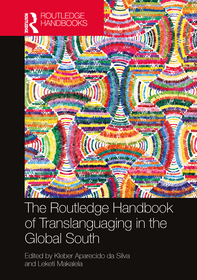
Syntax of Hungarian
Postpositions and Postpositional Phrases
Sorozatcím: Comprehensive Grammar Resources;
-
10% KEDVEZMÉNY?
- A kedvezmény csak az 'Értesítés a kedvenc témákról' hírlevelünk címzettjeinek rendeléseire érvényes.
- Kiadói listaár GBP 42.99
-
20 538 Ft (19 560 Ft + 5% áfa)
Az ár azért becsült, mert a rendelés pillanatában nem lehet pontosan tudni, hogy a beérkezéskor milyen lesz a forint árfolyama az adott termék eredeti devizájához képest. Ha a forint romlana, kissé többet, ha javulna, kissé kevesebbet kell majd fizetnie.
- Kedvezmény(ek) 10% (cc. 2 054 Ft off)
- Kedvezményes ár 18 484 Ft (17 604 Ft + 5% áfa)
Iratkozzon fel most és részesüljön kedvezőbb árainkból!
Feliratkozom
20 538 Ft

Beszerezhetőség
Még nem jelent meg, de rendelhető. A megjelenéstől számított néhány héten belül megérkezik.
Why don't you give exact delivery time?
A beszerzés időigényét az eddigi tapasztalatokra alapozva adjuk meg. Azért becsült, mert a terméket külföldről hozzuk be, így a kiadó kiszolgálásának pillanatnyi gyorsaságától is függ. A megadottnál gyorsabb és lassabb szállítás is elképzelhető, de mindent megteszünk, hogy Ön a lehető leghamarabb jusson hozzá a termékhez.
A termék adatai:
- Kiadás sorszáma 1
- Kiadó Routledge
- Megjelenés dátuma 2025. december 1.
- ISBN 9781041186977
- Kötéstípus Puhakötés
- Terjedelem480 oldal
- Méret 240x160 mm
- Nyelv angol 700
Kategóriák
Rövid leírás:
Syntax of Hungarian aims to present a synthesis of the currently available syntactic knowledge of the Hungarian language, rooted in theory but providing highly detailed descriptions, and intended to be of use to researchers, as well as advanced students of language and linguistics.
TöbbHosszú leírás:
The Syntax of Hungarian aims to present a synthesis of the currently available syntactic knowledge of the Hungarian language, rooted in theory but providing highly detailed descriptions, and intended to be of use to researchers as well as advanced students of language and linguistics. As research in language leads to extensive changes in our understanding and representations of grammar, the Comprehensive Grammar Resources series intends to present the most current understanding of grammar and syntax as completely as possible in a way that will both speak to modern linguists and serve as a resource for the non-specialist.
TöbbTartalomjegyzék:
General introduction (István Kenesei, General Editor), 1. The series, 2. Previous research into the grammar of Hungarian, 3. The project, 4. The language, 5. Acknowledgments, References, Chapter 1 General characteristics and overview (Veronika Hegedüs), 1.1. Introduction, 1.2. Basic types and properties of postpositions, 1.3. Syntactic uses of postpositions, 1.4. Bibliographical notes, Chapter 2 Postpositions: formal and semantic classification (Éva Dékány and Veronika Hegedüs), 2.1. Introduction, 2.2. Formal characterization, 2.3. Semantic classification, 2.4. Where to draw the line: Borderline cases of postpositions, 2.5. Bibliographical notes, Chapter 3 The internal syntax of PPs (Veronika Hegedüs and Éva Dékány), 3.1. Introduction, 3.2. Complementation, 3.3. Modification, 3.4. Bibliographical notes, Chapter 4 Predicative PPs (Katalin É. Kiss), 4.1. Introduction, 4.2. PPs used as primary predicates, 4.3. Telicizing PPs, 4.4. Atelic verb modifiers, 4.5. The syntax of verb modifiers, 4.6. Depictives, 4.7. Summary, 4.8. Bibliographical notes, Chapter 5 PPs used as arguments (György Rákosi), 5.1. Introduction, 5.2. PPs and verbal particles, 5.3. Core and non-core PP arguments, 5.4. Core and non-core PP arguments of adjectives, 5.5. PP complements in noun phrases, 5.6. Summary, 5.7. Bibliographical notes, Chapter 6 PPs used as obligatory adjuncts (Katalin É. Kiss), 6.1. Introduction, 6.2. Definiteness Effect verbs, 6.3. Types of internal arguments prohibited by the Definiteness Effect, 6.4. Definiteness Effect and aspect, 6.5. Neutralizing the Definiteness Effect by a focused adjunct, 6.6. Summary, 6.7. Bibliographical notes:, Chapter 7 PPs as adjuncts (Barbara Egedi), 7.1. Introduction, 7.2. Categorial types and formal properties of adverbial adjuncts, 7.3. Semantic types of adverbial adjuncts, 7.4. Placement and prosody, 7.5. Summary, 7.6. Bibliographical notes, Subject index, References.
Több






